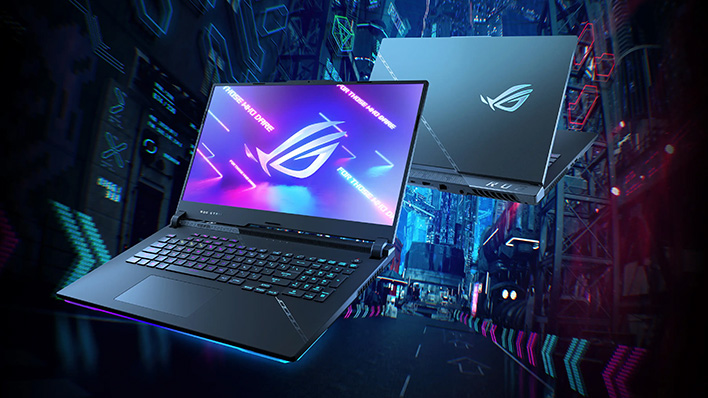AMD Ryzen 9 7945HX3D To Bring A Mountain Of V-Cache To Gaming Laptops

According to a product listing on LambdaTek, the laptop in question is an unreleased ASUS ROG Strix Scar 17 updated to feature a Ryzen 9 7945HX CPU. The unit is apparently the flagship part, sporting an RTX 4090 laptop GPU, 32GB of memory, and 2TB of SSD storage.
AMD has not announced any plans to introduce mobile X3D chips to the market, so the existence of this new 3D-Vcache chip is very surprising to see. If these new reports are true, gaming laptops could see some serious performance upgrades in the near future and have noticeably greater gaming performance compared to AMD’s non-X3D mobile CPUs in use today. We could also see AMD’s X3D mobile chips outperforming Intel’s competing Raptor Lake mobile CPUs in gaming tasks, as long as 3D V-Cache performs as well on mobile platforms as it does on desktop.
3D V-Cache is a game-enhancing technology AMD developed that drastically improves the L3 cache capacity of modern Ryzen chips. A layer of additional L3 cache is added on top of the CPU die and connected with through silicon vias passing vertically through the die. The additional capacity can substantially improve frame rates in CPU-limited games, as long as the game can take advantage of the additional L3 cache capacity X3D chips have access to.
X3D Laptop🥰https://t.co/6zWQWS52Im pic.twitter.com/aBrqn7UfpH
— HXL (@9550pro) July 24, 2023
As a result, AMD reduces the clock speeds of desktop X3D parts by a few hundred MHz to help counter the heat dissipation issues, reducing overall power draw. This shifts the silicon down the power-performance curve, often resulting in better power efficiency, even if raw compute is lower. Mobile parts are more power limited, though, so this trade-off may not come into play, while still allowing the additional L3 cache to bolster gaming workloads.
As good as it sounds, take these reports with healthy dose of skepticism given that AMD has not announced any mobile X3D chips yet. But we hope these reports are true since 3D V-Cache could seriously improve laptop gaming performance in CPU-demanding titles.

